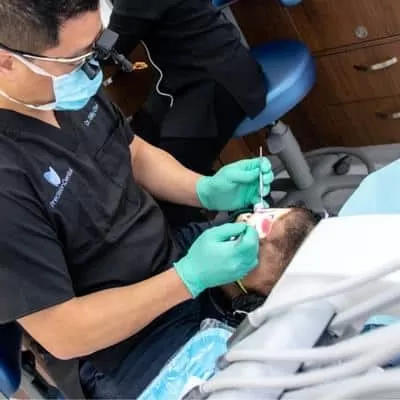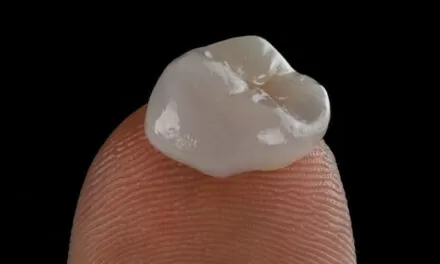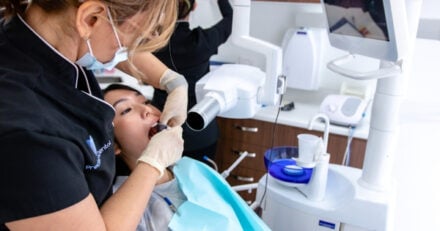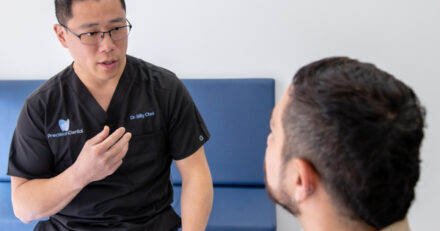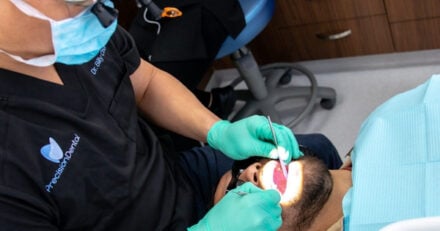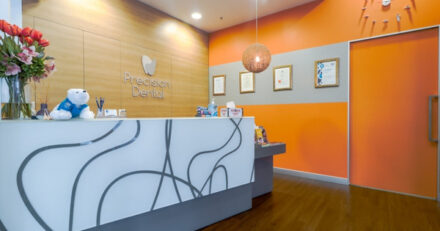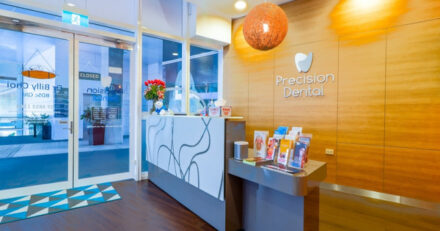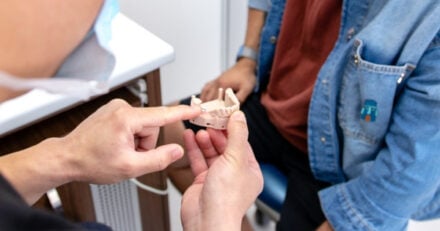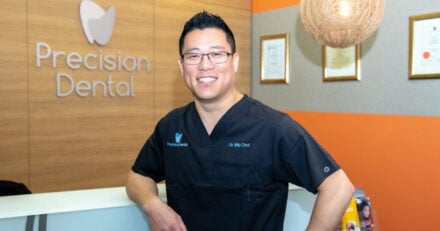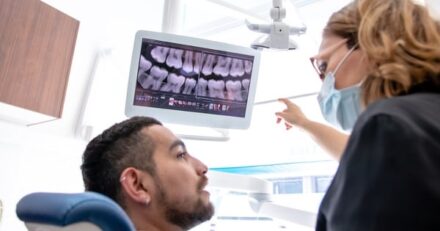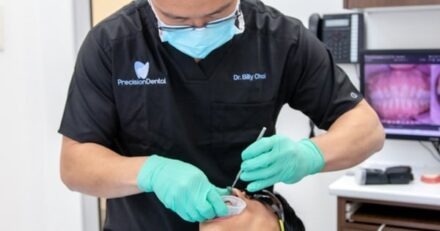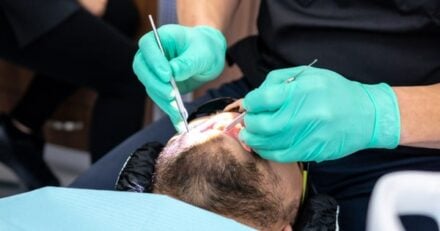3D Printed Crowns: Dentistry Hasn’t Been Resting On Its Laurels

There was a time when crowns could be found only on the heads of royalty, although certainly not whilst playing cards; nor during a game of croquet with a live flamingo mallet and uncooperative hedgehogs for balls.
Such royal headgear has been around since at least the Copper Age, with archaeologists discovering what is claimed to be the oldest one in 1961, secluded in Judean Desert cave. With an equal 17 centimetre diameter and height, and made of blackened copper (what a surprise) it was found along with 400 other items dating to between 4500 and 3600BCE.
Known as ‘The Copper-Age Crown’ because creativity was at the cinema smoking a cigarette and watching West Side Story, by the time Prince Charles finally got to be King in 2023, many more much flashier ones had been made, and most of the planet got to see what $US57 million looks like sitting precariously atop someone’s head.
St Edward’s Crown is considered a holy relic. Not because its original owner Edward the Confessor jauntily wore it at Easter and Christmas (which, sans jaunt, he reportedly did), but because in 1161, a week (and two hundred years) before Valentine’s Day he was canonised by Pope Alexander III.
It is the most important piece of the British royal collection. Even after once being flattened by a mallet not made of flamingo.
This bedazzled ermine sweatband with a structure of solid gold and studded with 444 precious (and controversial) gemstones, stands 30 centimetres high and weighs precisely 2.23 kilos. Steeped in history and tradition, it’s only ever worn once by the monarch being crowned. So like the good dinner set, it’s only come out of the cupboard seven times. Queen Victoria didn’t wear it because her head was too small; clearly the royal household was devoid of self-adhesive hat sizing tape.
Since he was hardly restoring the monarchy and being of commensurate mass, Charles III could have ceremoniously had a live bettong stand upright on his head. (Maybe even wearing a tiny crown.) As a lifelong environmentalist with a deep affection for Australia, it was a missed opportunity to bring attention to the plight of this irreplaceable, nocturnal ecosystem engineer.
Along with every other animal in the world threatened with extinction.
It’s an understatement to describe it as incredibly uncomfortable and enormously expensive. Species extinction, that is; along with royal crowns. As too, were the first dental crowns, which surprisingly turned up around 201AD; thousands of years before Chuck did something out of sight behind an anointing screen, in front of millions.
Since the name of the screen screams he was anointed, why the secrecy is anyone’s guess. It carries the suspicion there was some kind of heir hilarity involved; like an old timey two-fingers and a snorty Hooray Henry guffaw.
Something else we’ll never really know about the British royal family aside from why it matters.
What matters in the real world is our teeth. How to keep them, and how best to replace them when the keeping hasn’t kept.
Those first dental crowns appeared at a time when the world population had reached 257 million, Ancient Rome was at its peak with Marcus Aurelius Antoninus as emperor, and in Alexandria (Egypt; not postcode NSW 2015) you could buy holy water from a coin-operated vending machine.
Take that, Coke!
Like royal crowns, these first dental crowns were made by goldsmiths.
They served only to prove the wealth of the wearer. Perfectly good teeth were removed and replaced by gold banding. As a very malleable precious metal, dental functionality was completely lost: which gave servants the added task of preparing soft foods to not only maintain this crazy cosmetic work but to double-down on the social standing of someone rich enough to not have to chew their food.
Because they couldn’t.
Fast forward to the 18th century when modern dentistry basically began.
Its nominated father is French surgeon Pierre Fouchard who published a 900-page tome, Le Chirurgien dentiste in 1728. It is his scientific reflection, keen observation and exacting clinical wisdom covering dental anatomy, dentofacial orthopaedics, and the techniques and treatments of oral surgery and diseases of the mouth.
Still in Paris and twenty years on, surgeon and dentist Claude Mouton took up the mantel. In 1746 he too wrote a book (before his Montreal reincarnation in 1931 to write books about hockey.) Essay d’odontotechnie, ou, dissertation sur les dents artificielles is entirely dedicated to prosthetic dentistry; such was his decision that aesthetics was important in dental care. Predominantly, the approach had been to remove offending teeth and not worry too much about anything after that.
Monsieur Mouton laid the foundation for prosthodontics by creating the first crowns, using gold posts. (Not to be confused with goal posts of hockey.)
As with fabulous food, the French just kept getting it right.
In 1789 Nicolas Dubois de Chemant patented porcelain paste for tooth reconstruction – replacing other materials that had proven largely unsuitable in the long-term. Like ivory, which apparently had an unpleasant smell.
Not to an elephant, no doubt. Or a walrus, or a no longer hip-hip hippo.
A hundred years later, and with many dental innovations in between, S.S. White Dental Manufacturing Company on Staten Island, USA employed 425 workers as was the world’s largest supplier of dental equipment. Until the early 1970s it manufactured dental chairs, drills, amalgam, dentures, toothpaste, mouthwash, and just for laughs bottled nitrous oxide.
It was the 20th century with the fusing of porcelain to metal that brought the most significant advance to dental crowns – sounding much like what could have happened with Mouton’s posts and de Chemant’s paste but apparently didn’t. It’s a combination that gives the appearance of a natural tooth with the durability of a metal crown.
1984, when Bhopal was tragically, chemically disastrous, Indira Ghandi was assassinated, Prince was making doves cry and Orwell’s Big Brother was meant to happen (and essentially did), US company Corning Inc., made the very first synthetic crown of ceramic and glass.
Corning must’ve been tired and bored just churning out Pyrocram cookware for almost thirty years. (Check your mum’s cupboards. That stuff’s worth a motza.)
It’s a quality product in high demand by both dentists and patients – the ceramic crowns; though you’d have to include that vintage cookware now, too. This type of dental ware has the strength and longevity of a natural tooth (if it hadn’t been wrecked in the first place) and the visual appeal of translucency.
And just when you thought that Corning brought us the crowning glory of the crown, the 21st century slaps 3-D printed ones on the table.
It’s cutting edge that’s cutting the edge off the price of ceramic ones.

Dental crowns are one of the most common restorative dental procedures dentists perform.
Conventional methods require multiple patient visits and accumulated chair time. Dental laboratories take between 10 to 30 days to fabricate a screw-retained implant crown; with this new technology, dentists are able to 3-D print a hybrid resin permanent crown in their own clinic within 45 minutes.
The technique and manufacture is revolutionary in its streamlining and precision. It allows customisation of any unique elements in terms of the shape and colour of the tooth it’s treating; and this extreme accuracy makes implantation much simpler.
For dentists in rural and remote areas it’s the ultimate game changer.
Time will tell whether 3D printed crowns will fully replace ceramic crowns in terms of tissue response and real use. It certainly doesn’t mean that labs will go out of business because people are 3D printing their own teeth during an episode of Fargo.
There are costs involved beyond high-tech equipment and resins – like titanium abutments and implant-positioning transfer devices. The adoption curve must be considered too; dentistry is largely very traditional and conservative. Many dentists still fill with amalgam, and more than half don’t use digital impression scanning technology.
It’s a common human trait to not necessarily embrace change like a long-lost lover. There are people who still swear by their manual toothbrush and wooden toothpicks. We’re always living a juxtaposed reality. While one man can sit on his can with $US57 million perched on his head another perches can in hand, panhandling.
Among it all, printable zirconia’s hitting the dental market, and manufacturers are developing 3-D printable solutions for bone augmentation.
What’s already possible is an incredible shift in dentistry. And this is just the beginning, in impressive restoration work. Crowning that, would be restoring the bettong.
The content has been made available for informational and educational purposes only. Precision Dental does not make any representation or warranties with respect to the accuracy, applicability, fitness, or completeness of the content.
The content is not intended to be a substitute for professional personal diagnosis or treatment. Always seek the advice of your dentist or another qualified health provider with any questions you may have regarding a dental or medical condition. Never disregard professional advice or delay seeking it because of something you have read or seen on the Site.


